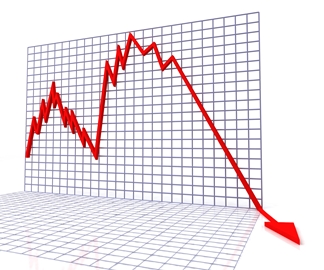Understanding Business Bankruptcy
:
Filed under: Business Bankruptcy
 Filing for bankruptcy is a significant decision for any business, often seen as a last resort when financial turbulence becomes too severe to manage through conventional means. It’s a process shrouded in misconceptions and fears, partly because its implications are far-reaching, affecting not just the business but also its employees, customers, and creditors.
Filing for bankruptcy is a significant decision for any business, often seen as a last resort when financial turbulence becomes too severe to manage through conventional means. It’s a process shrouded in misconceptions and fears, partly because its implications are far-reaching, affecting not just the business but also its employees, customers, and creditors.
The Basics of Business Bankruptcy
Bankruptcy is a legal process that allows individuals or businesses (the debtor) who are unable to repay their outstanding debts to seek relief from some or all of their financial obligations. For businesses, this can mean restructuring debt and continuing operations or ceasing operations altogether. The specific outcomes and processes depend on the type of bankruptcy filed:
- Chapter 7 (Liquidation): This is often the end of the line for a business. Under Chapter 7, a business ceases operations, and a trustee sells the company’s assets to pay back creditors as much as possible. After the liquidation, the business effectively ceases to exist.
- Chapter 11 (Reorganization): This form of bankruptcy is about getting a second chance. It allows a business to continue operating while reorganizing its debts under a court-approved plan. The goal is to emerge from bankruptcy as a healthier, more sustainable business.
- Chapter 13 (Repayment Plan): Though less common for businesses and more suited for sole proprietors, Chapter 13 focuses on creating a repayment plan to pay back debts over time, typically three to five years.
For Business Owners: Navigating Bankruptcy
The Decision to File
The decision to file for bankruptcy should come after thorough consultation with financial advisors and legal counsel. It’s essential to consider all alternatives, such as debt consolidation, negotiation with creditors, or seeking out government grants and loans. Bankruptcy can offer relief and a structured way to handle overwhelming debt, but it also has long-term consequences, including impacts on credit scores and business reputation.
The Process
- Filing: The process begins with filing a petition with the bankruptcy court. You must disclose all assets, liabilities, income, and expenses.
- Automatic Stay: Upon filing, an automatic stay goes into effect, halting all collection activities against the business. This gives you breathing room to work on your bankruptcy case.
- Meeting of Creditors (341 Meeting): This is a mandatory meeting where creditors can question the debtor about debts and property.
- Reorganization or Liquidation: Depending on the chapter filed, you’ll either work on a plan to reorganize and pay back debts or proceed with liquidating assets to pay creditors.
Life After Bankruptcy
Post-bankruptcy, the focus shifts to rebuilding. For businesses that continue operations, restructuring efforts must be diligently followed and monitored. Business owners will also need to work on repairing credit and may face challenges in securing new financing or business relationships.
For Consumers: What You Need to Know
Impact on Services and Products
If a business you frequent files for bankruptcy, you may worry about warranties, gift cards, and ongoing services. Under Chapter 11, businesses often honor these obligations to maintain customer goodwill. However, in a Chapter 7 liquidation, the fulfillment of these services or products becomes uncertain.
Outstanding Orders and Refunds
For consumers awaiting products or services from a bankrupt business, the chances of fulfillment depend on the bankruptcy chapter filed. Under Chapter 11, there’s a good chance your order will be honored. In Chapter 7 cases, consumers become unsecured creditors, often last in line to be paid, making refunds unlikely.
Gift Cards and Warranties
Use any outstanding gift cards as soon as possible. Future acceptance is uncertain, especially if the business ceases operations. Similarly, warranties may no longer be honored, particularly if the manufacturer or service provider shuts down.
Conclusion
Bankruptcy, whether it’s for restructuring or liquidation, is a complex process with significant implications for all parties involved. For business owners, it represents a challenging yet potentially revitalizing path forward. Consumers, on the other hand, face a degree of uncertainty regarding products, services, and warranties.
Understanding the nuances of business bankruptcy can help stakeholders make informed decisions and prepare for the outcomes. While the process can be daunting, it also opens up avenues for fresh starts and new beginnings. For businesses, this can mean a second chance at success. For consumers, it’s about adjusting expectations and safeguarding their interests in the changing landscape.







